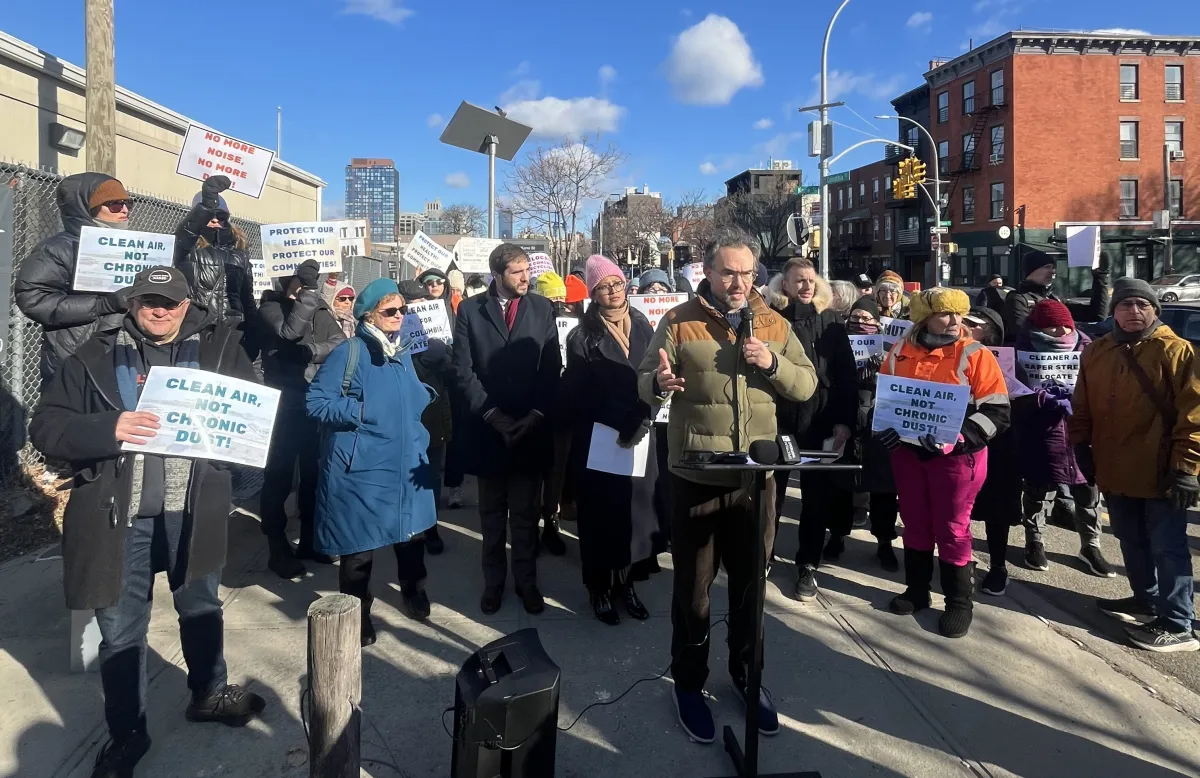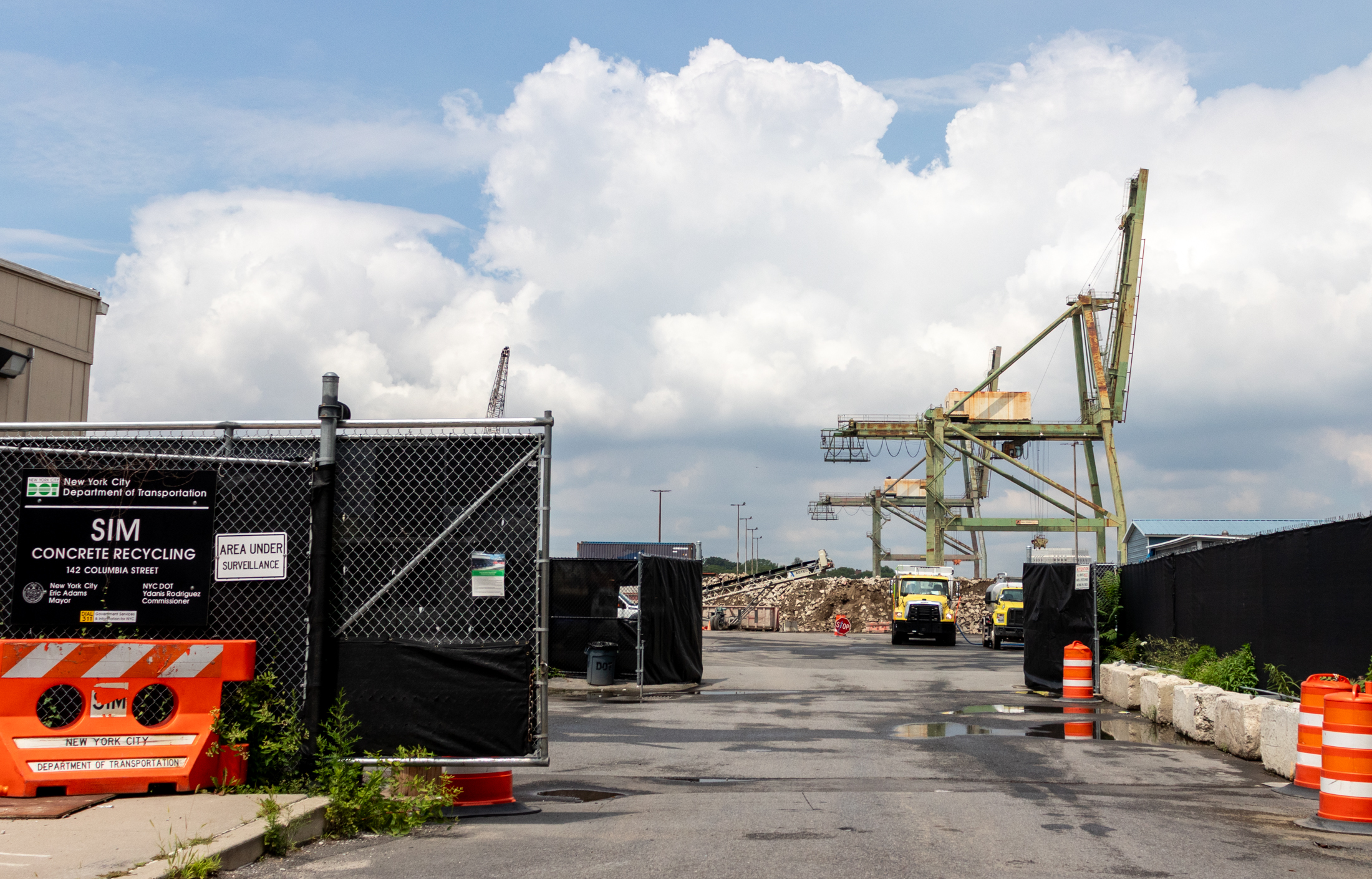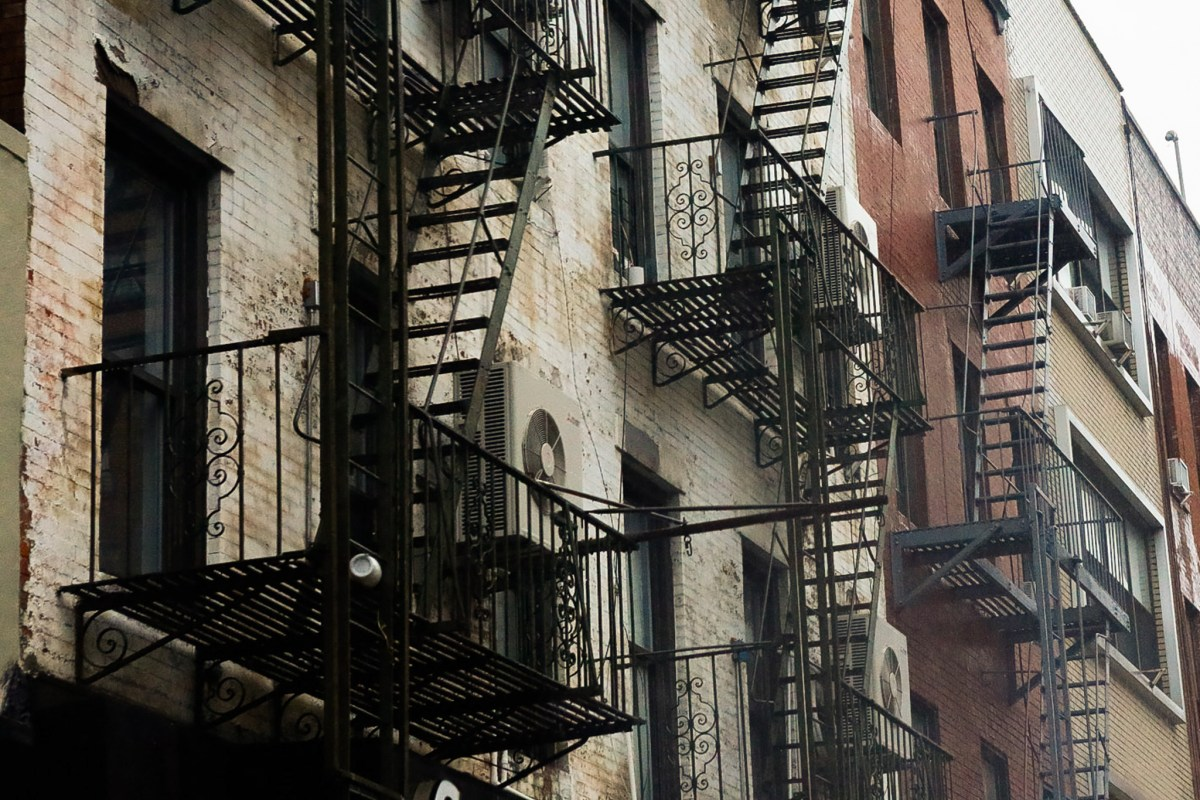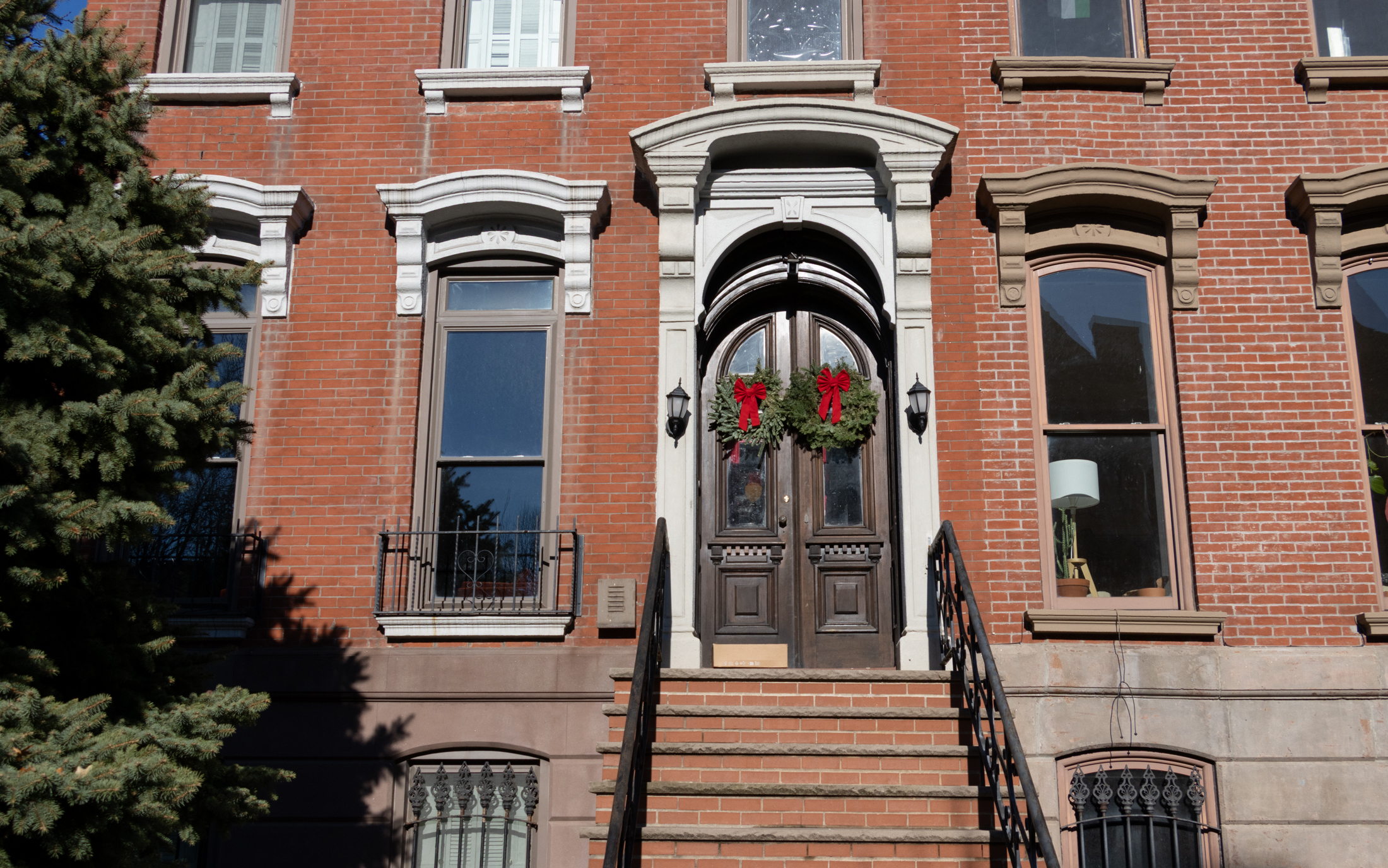Noxious Columbia Waterfront Concrete Recycling Facility to Close
Residents have been speaking out against the DOT-run plant since it was relocated from the South Brooklyn Army Terminal to Columbia Street last year.

The city will close a controversial concrete recycling facility on Columbia Street next month. Photo by Susan De Vries
by Kirstyn Brendlen, Brooklyn Paper
The city will stop operations at a controversial concrete recycling facility in the Columbia Waterfront District next month and close the plant altogether by the end of the year, Mayor Eric Adams announced on Friday.
Residents have been speaking out against the Department of Transportation-run plant since it was relocated from the South Brooklyn Army Terminal to Columbia Street last year. Concrete recycling operations were loud, they said, and generated huge clouds of concrete dust that blew across the neighborhood and into their homes. Short-term exposure to cement dust is known to cause irritation to lungs and eyes, and long-term exposure can cause serious illness including silicosis.
Officials have repeatedly said the Columbia Street location was temporary, and assured local politicians earlier this year that they were seeking alternative locations. On Friday, Adams said the closure would make way for the city’s proposed redevelopment of the Brooklyn Marine Terminal.
“This move not only clears the way for much-needed housing, open space, and a school as part of our proposed Brooklyn Marine Terminal project, but also reflects our city’s deep commitment to continuing to improve the quality of life for all New Yorkers,” he said in a statement.
The city said the recycling plant will be relocated, but did not say where or when. It was originally moved to make way for offshore wind construction at the Army Terminal.

Resident Molly Pearson said it was “shameful” it had taken the city so long to close the facility, but said the news “finally provides some long overdue peace of mind.”
“It means we can open our windows again. It means we feel safe to breathe the air in our neighborhood. It means our buildings won’t literally shake from the weight of the trucks and crack from the vibrations caused by the work they are doing,” she said in a statement. “It means we won’t have to run our air purifiers twenty four hours a day. It means our kids won’t film swirls of concrete dust on windy days, asking us if it’s safe outside.”
Locals had grown increasingly frustrated about the facility, circulating a petition against it and even blocking trucks from entering during a rally earlier this year. Though the city had promised to implement dust-reduction measures, residents said they weren’t enough, and local politicians have been urging the city to close the site for months.

Council Member Shahana Hanif, who helped spearhead the fight to close the facility, said the decision was a “testament to the power of local organizing.”
“The facility’s closure will help improve air quality, reduce truck traffic, and ease noise pollution in an area that has borne environmental burdens for far too long,” she said in a statement. “It’s particularly important that we won this outcome outside the context of the Brooklyn Marine Terminal Vision Plan proposal. The health of local residents never should have been used as a bargaining chip.”
City Hall said the recycling facility helped construct sidewalk extensions, pedestrian and bus boarding island, and more; and said DOT will “accommodate” the end of operations on Columbia Street “while continuing its concrete construction efforts.”
Editor’s note: A version of this story originally ran in Brooklyn Paper. Click here to see the original story.
Related Stories
- Columbia Waterfront Locals Demand City Shutter Concrete Facility
- Arrival of Concrete Facility Brings Dust, Noise to Columbia Street Waterfront District
- EPA Nixes $3 Million El Puente Grant for Local Input in Environmental Plans
Email tips@brownstoner.com with further comments, questions or tips. Follow Brownstoner on X and Instagram, and like us on Facebook.





What's Your Take? Leave a Comment